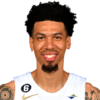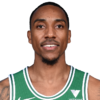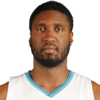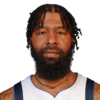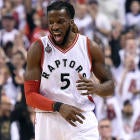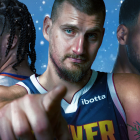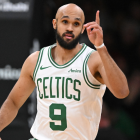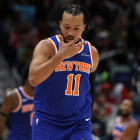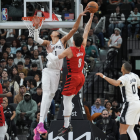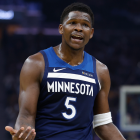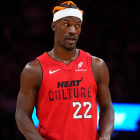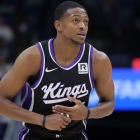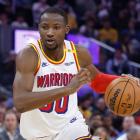Every season, there are productive NBA players who just can't get it together. Sometimes injuries hold them back, sometimes their teams don't make the most of their abilities and sometimes off-the-court trouble messes things up. For these 10 players, 2016-17 will be a fresh start and a chance to bounce back from a disappointing year:
Noah was a candidate to bounce back last season, after a summer spent working on his body to reduce the risk of another knee injury. Then Bulls coach Fred Hoiberg made the controversial decision to bench him and reduce his playing time. As he tried to regain his rhythm, he suffered a freak, season-ending shoulder injury. After two years full of frustration, there might not be a hungrier player in the league.
At 31 years old, Noah should still be in the tail end of his prime as he enters his first season with the Knicks. Even if he never reaches the level that he did in 2013-14, when he won Defensive Player of the Year and finished fourth in MVP voting, he can still contribute as long as he stays on the court. There are no doubts about how hard Noah will play; the question is whether or not his body will betray him again.
The most impressive part of the Raptors' 56-win season is that they did it largely without the services of their big offseason acquisition. A combination of plantar fasciitis and knee surgery meant that Carroll, 30, missed 56 games and wasn't efficient when he was in the lineup. Now he is aiming to show everybody why Toronto gave him a four-year, $60 million contract.
At his best, Carroll is the sort of player that every team wants these days. He's a 6-foot-8 combo forward who takes pride in playing defense, moves the ball and reliably makes 3-pointers. He was the least heralded starter on the Hawks team that won 60 games two years ago, but Atlanta felt his absence last season. The Raptors' defense suffered a blow when they lost Bismack Biyombo in free agency, but maybe the return of Carroll -- and more use of smallball -- will make up for it.

The Rockets were confusing last season, and part of that was the deterioration of Brewer. He has always been an energy player who thrives in transition, so you'd think that Houston's fast pace would be perfect for him. Instead, after signing a three-year contract to stay there, he had one of the worst seasons of his career. Brewer's shot was all over the place, and for the first time, he drew criticism for his effort.
The Rockets have to hope that this was an anomaly. Mike D'Antoni has arrived to make things more fun, and free agent signees Ryan Anderson and Eric Gordon came from New Orleans to space the floor. If this environment doesn't bring out the best in Brewer, then none will.
I still don't understand what went wrong with Green last season. The Spurs made major changes by adding LaMarcus Aldridge and playing at a slower pace, but these things shouldn't have resulted in that kind of shooting slump. Green's 3-point percentage was 33.2 percent, following four seasons where he shot 41.8 percent, 41.5 percent, 42.9 percent and 43.6 percent. As CBS Sports' Zach Harper pointed out, Green struggled even when left completely open -- he had 178 open looks from deep and made just 35.8 of them.
Green helped the Spurs despite all this because he's an excellent defender. As a 3-and-D guy, though, he'll be much more valuable if he actually makes the 3-pointers.
Normally when a player's stats decline in his mid-30s, they don't rise again. The 35-year-old Korver may be the exception to this rule. He shot just 43.5 percent last season, including 39.9 percent from 3-point range, good numbers for a mere mortal but not for the superhuman sharpshooter that shot 48.7 percent and 49.2 percent from deep in 2014-15. This can be explained by the fact that he started the season with a slightly different shooting form, following two offseason surgeries.
In a way, Korver has already bounced back. He ditched his adjusted shot sometime in January and, from February onward, he shot 46.3 percent made 44 percent of his 3-pointers. If he remains that efficient, the Hawks will be ecstatic.
Perhaps no player in the league fell off harder than Mozgov last season. After being a crucial part of the Cavaliers' march to the NBA Finals in 2014-15, he was a bit player during the 2015-16 regular season and a cheerleader in the playoffs. When he signed a four-year, $64 million contract with the Lakers, the reaction was swift and savage.
Perhaps Mozgov shouldn't have been playing at the beginning of last season. ESPN's Brian Windhorst said as much when reporting that his offseason knee surgery was not a success. His mobility was simply not the same, and that's a problem when you're a defense-first center who is expected to catch lobs and finish around the rim. Los Angeles is counting on Mozgov being the player he was two years ago, maybe even with some new tricks up his sleeve.
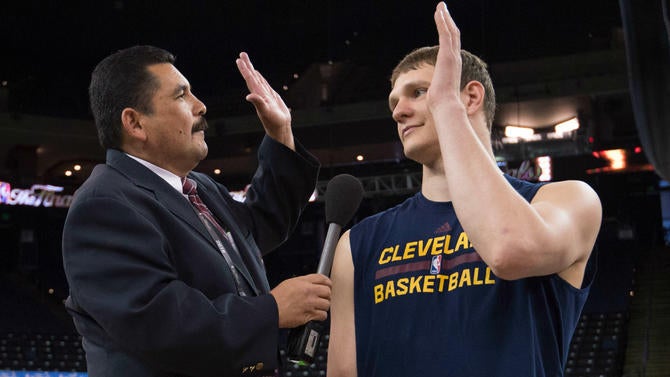
Korver wasn't the only 2015 All-Star who had a drop-off with the Hawks last year. The speedy point guard had a fine year overall, but he couldn't finish around the rim or defend opposing point guards as well as he did when Atlanta won 60 games. One tidy explanation: In June, he said in a since-deleted Instagram post that he played through a tear in his patella and "could barely jump or stop."
One reason for optimism: Despite the apparent injury, Teague shot a career-high 40 percent from 3-point range. If that stays the same and he's fully healthy, then the Pacers could see the best possible version of Teague.
Not too long ago, Hibbert was seen as the league's premier rim protector. His presence made LeBron James unleash a floater that he'd barely used in the NBA. Frank Vogel had to apologize for taking him out during the final seconds of a playoff game. Two years ago, the Pacers reduced his minutes a bit, and then they traded him to the Lakers for almost nothing last summer. In Los Angeles, he had his least productive season since he was a rookie. Now on a one-year, $5 million deal in Charlotte, he needs to prove that he still belongs in the league.
The good news: Hornets coach Steve Clifford built a solid defense with the slow-footed Al Jefferson at center. If there's anyone who can make the most of Hibbert's defensive skills, it should be Clifford. The bad news: The NBA has changed. Opposing teams will target Hibbert in pick-and-rolls, and when they use lineups with five shooters, there will be no one for him to defend.
Like Korver, Morris has already started to bounce back. The forward was a shell of himself for the Suns last year, mad at management and ineffective until his trade to Washington. In 37 games for Phoenix, he shot 39.7 percent, including 28.9 percent from deep. With the Wizards, there was an uptick in both effort and efficiency.
In 2014-15, Morris was arguably the Suns' best player. He wasn't a consistent enough 3-point shooter to be a true stretch 4, but he averaged 15.3 points and was reliable from midrange. Returning to that form would make things a lot easier for best buddies John Wall and Bradley Beal to find open looks.
It's hard to find something nice to say about Lawson's time in Houston and Indiana. He looked like a liability on both ends, unable to punish defenses with his jumper and uncomfortable without the ball in his hands. At his best in Denver he was a decisive playmaker out of the pick-and-roll, able to use his quickness to get in the paint and his vision to find open shooters. The Nuggets empowered him, though, and he did not appear confident when he had to play a supporting role.
Now in Sacramento, Lawson has the chance to earn a starting point guard job and find his mojo again. This is not traditionally the franchise where players go to get back on track, but it's hard to imagine it going worse than last year.


